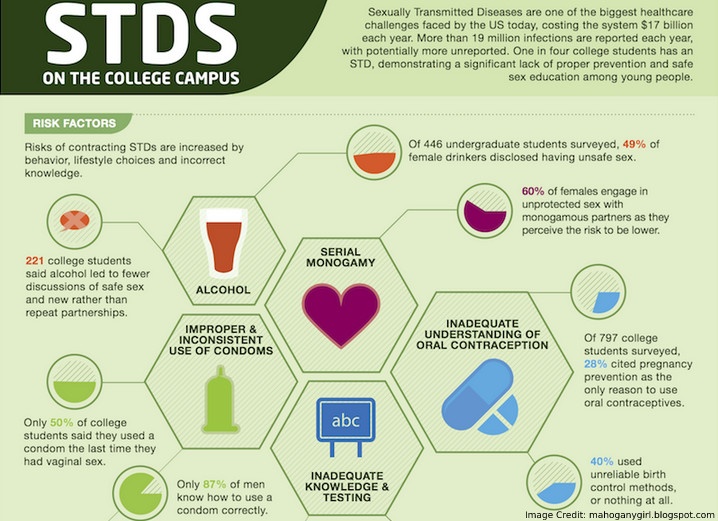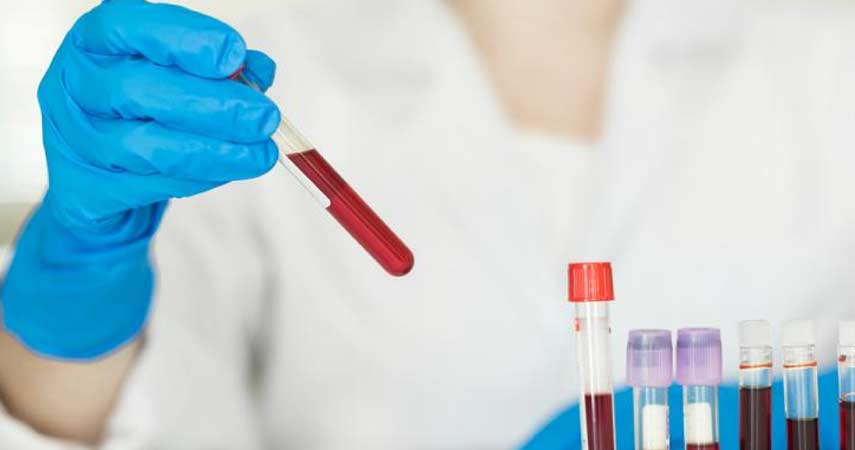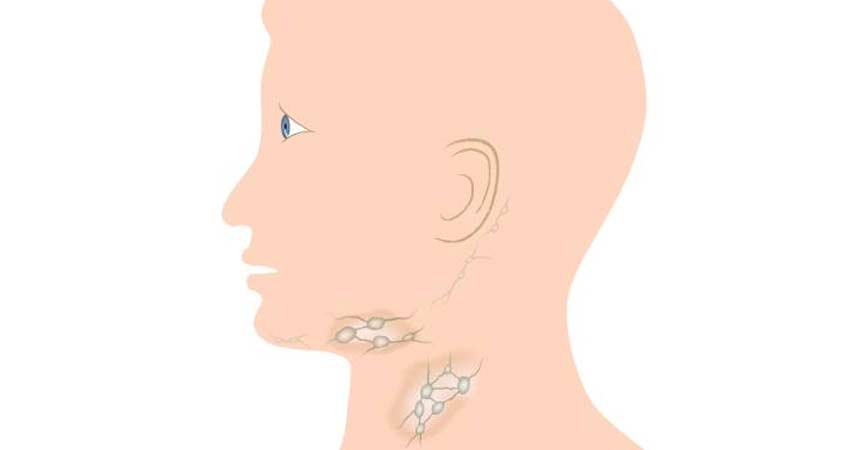Chancroid is a sexually transmitted infection (STI) caused by a bacteria called Haemophilus ducreyi. It is a gram-negative bacterium that belongs to streptobacillus[1] group. It causes sores and ulcers in the genitals that are extremely painful and uncomfortable.
Unlike other sexually transmitted infections like gonorrhea and chlamydia which are very common, chancroid is a rare sexually transmitted infection affecting men and women alike who are sexually active. The incubation period of chancroid varies typically from 12 hours to 5 days.
The bacteria Haemophilus ducreyi attacks the soft mucous membrane of the genitals. This results in forming ulcer-like sores in and around your genitals. The size of these ulcers could be somewhere ranging from 3mm to 50mm.
This size variation could be due to the difference in severity of the infection. In the initial stages, the ulcer would be comparatively small and less painful. But as the severity increases and the treatment are delayed, these ulcers open up to produce infectious fluids that carry the bacteria.
The ulcer produces fluids that carry the contagious bacteria and is passed on to another person while having oral, anal or vaginal intercourse.
One of the factors that make chancroid highly dangerous than another STIs is that it can be transferred through skin contact as well[2]. If a person touches the fluid and then comes into contact with another person, the bacteria can be transferred to the other person even without sexual intercourse.
What is Chancroid?
Chancroid is most common in resource – deficient areas of Africa and Asia. It was one of the reasons for transmission of human immunodeficiency virus (HIV).
The bacteria was initially found in the 1990s and around 4 million to 6 million[3] cases were found worldwide. Female sex workers and people with frequent partner change play a crucial role in the spreading of this virus.
The United States and the west in general including UK, Canada, France and Australia have seen very rare cases of this infection when compared to other STIs and STDs. People who have been diagnosed with chancroid has found to have been traveling to any developing or underdeveloped nation.
Chancroid is mostly found in developing countries. People belonging to low socioeconomic groups and are frequently associated with commercial sex workers are highly vulnerable to contracting this infection. The outbreak of this infection can be associated with cocaine use and prostitution.
The infection has several variants. Some of them are dwarf chancroid, giant chancroid, follicular chancroid, transient chancroid, serpiginous chancroid, mixed chancroid, phagedenic chancroid and chancroidal ulcer. Although all these variants are caused by the same bacteria, the effect, severity, and pathogenesis vary according to the type.
People who are suffering from chancroid has at a higher risk of contracting many serious STDs like HIV. Any sexually transmitted infection complements the HIV virus, making it easy to contract, sustain and grow.
For men, the ulcers can be developed around the internal and external surface of the prepuce, coronal sulcus, shaft of the penis, urethral meatus, perineum area, frenulum, prepucial orifice, and glans penis.
For women, the areas where chancroid is developed are labia majora, clitoris, labia minora, vestibule, fourchette, perineal area, or inner thighs. These ulcers are usefully very painful and make a person uncomfortable while urinating, defecating and having sexual intercourse.
What are the Causes of Chancroid?

Chancroid is mainly transmitted by sexual contact with an infected person through vagina, penis, anus or mouth. Like any other STIs or STDs, it can be transmitted from one person to another in the following ways.
- Unprotected vaginal, oral or anal sex with one partner or multiple partners
- Coming into contact with the fluid from skin-on-skin contact without having intercourse
- Sharing sex toys without cleaning it or changing condoms after using it on another person
- Unprotected MSM sex (Between two males)
- Visiting a developing country with poor sanitation and healthcare
- Unprotected Sexual intercourse with commercial sex workers from a low socioeconomic backgrounds
- Skin-to-skin contact with the affected person and coming into contact with the ulcer fluid
One of the things that need to be noted is that since it is the fluids from the ulcer that is spreading the bacteria, having sexual contact is not necessary to contract this infection. Coming into contact with the person’s skin can also spread the infection.
For example, the person touches the fluid for some reason and then makes skin contact with another person would be enough to spread it. This makes chancroid a much more dangerous and contagious infection than other sexually transmitted infections.
Chancroid is usually found in underdeveloped countries of Africa and Asia. So if someone is a frequent traveler to these areas, they are susceptible to the infection.
If you are sexually involved with a network of people with a higher number of partner change rate, people from low socioeconomic background, commercial sex workers who are less aware of safe sex practices or are active in places with poor sanitation awareness and unhealthy sexual practices, then your chances of contracting with the infection are higher.
Prevention and being extra cautious about hygiene and safe sex is the only way to avoid the infection under such circumstances.

What are the Symptoms of Chancroid?
Pain in the genital area is the most common symptom of having chancroid. The reason of pain and discomfort is the ulcer that develops in the genital area. There can be single or multiple ulcers in and around the private parts.
This can, later on, increase in size and split open to become huge wounds which would facilitate an easier transfer of the bacteria from one person to another. Although the symptoms are more or less same for men and women, there can be some significant differences also.
Some of the other symptoms of chancroid are discussed below:
For men
- Red and painful bumps around genitals
- Open sores within few days of having contracted the infection
For women
Unlike men, women usually does not get sores. The most common symptoms in women are
- Red bumps in anus, labia or thighs causing pain during sex and otherwise
- Rectal bleeding
- Painful sexual intercourse with no particular reason
- Painful and uncomfortable urination or defecation
- Vaginal discharge – sometimes excess and foul smelling
Some other symptoms that occur in both men and women are given below
- Change of ulcer size – it may increase as days pass
- Ulcer color turns to yellow or grey
- Bleeding when touching the ulcer
- Painful sexual intercourse
- Swelling around genital, between lower abdomen and thigh
- Swollen lymph nodes – the bacteria can break the skin to cause abscesses or pus
How to Diagnose Chancroid?

So the only way to diagnose the infection is through a medical test. If you have any of the above-mentioned symptoms for the prolonged time period, it is always advisable to take a test. The earlier the infection is diagnosed and treated, the better would be the chance of recovery and cure.
People falling under the following categories can opt for frequent testing even if there are no symptoms as they are always at a higher risk of catching the infection.
- People with multiple sexual partners
- People who have unprotected sex with one or more partners
- Gay and bisexual men, having unprotected sex
- If your partner has unprotected sex with someone else
- If your partner mentions having sexually transmitted infections
- If you have any other sexually transmitted infections
- If you have had unprotected sex recently with a new partner
- If you are a commercial sexual worker
- If you are in a developing country with poor sanitation and healthcare
- If you have been to a developing country with poor sanitation and healthcare
The one and the only way to diagnose the infection is to consult a doctor. The fluid sample from the sores is used for lab test and diagnose the infection.
A single test will not diagnose the infection. A sequence of several tests is performed in order to confirm the infection. Sometimes, blood tests will also help to identify the presence of chancroid bacteria. If you have pain around the genitals especially around the groin, the lymph nodes in the groin may also be examined by the doctor.
Since having one sexually transmitted infection increases the chances of having any other STIs like gonorrhea or chlamydia, many other tests are required to determine the presence of any other bacteria present in the body.
Chancroid bacteria have similar structure like genital herpes or syphilis. So more diagnose of the genital discharge is required.
Chancroid is usually misdiagnosed with syphilis[4]. The symptoms, bacterial molecular structure, and the severity are pretty much the same. It is often get confused with one another. So in most cases, doctors will diagnose for both the infections to determine the exact cause and type of infection.
What are the Treatments for Chancroid?

Luckily, like most of the sexually transmitted infections, chancroid is treatable and can be cured completely if proper treatment is sought at the earliest. Since it is easily contagious, both diagnosed person and their partner/partners should avail treatment.
The earlier the infection is identified and treated, the lesser would be the complications associated with it. Depending on the severity of the infection and how early or delayed the treatment has begun, different methods of treatment are executed on the infected person.
An early case can be treated and cured using antibiotic prescription while some worst-case scenarios require surgery and tissue removal.
What are the Medications for Chancroid?
Antibiotics are the most common prescription given for chancroid. This will kill the bacteria causing the infection. Taking antibiotics will also prevent scarring of ulcer tissues as it heals. Some of the medications used for treatment are:
- Zithromax 1.0 gm (250mg x 4 tablets)
- Cipro 500 mg twice a day for 3 days
- Cipro XR 500 mg once a day for 3 days
- Erythromycin base 500 mg orally three times a day for 7 days
- Ceftriaxone 250 mg IM in a single dose
These medications vary according to the severity or any specific health condition of the patient. For example, if someone is pregnant and is affected with chancroid, then the dosage or treatment method varies according to their health condition.
Also, for people who have any autoimmune diseases or are HIV positive, the treatment could vary significantly. It is up to the doctor’s discretion to decide what is suitable for someone.
Surgery

In some cases, especially when the infection has progressed to a more severe level, surgery would be the only option left. The doctor will drain the fluid from large and painful ulcers with a needle. This will help to rapidly reduce the pain and swelling.
Although this process is quick and effective, surgery may result in scarring of the area. This can, however, be reduced by taking antibiotics in addition to surgery.
Infected person and their partners are also recommended to abstain from sexual activities until the treatment is completely over.
Once the wound is closed and the scars are healed, the doctors will ensure that the bacteria are completely eliminated from the host’s body. There is a risk of infection and complication of spreading the infection even if someone is undergoing treatment.
It is important to get a confirmation from your doctor before a person can resume their sexual life. This is applicable for both the infected person and their partner/partners.
People who are infected are usually tested for HIV as well because having HIV can decrease the effects of medication or even fail to cure the infection. As HIV patients have reduced immune functions, a different type of treatment needs to be administered. They would also require prolonged treatment or repeated dosage than that of people who are HIV negative.
The effect of treatment would be visible in about 2 -3 days. But even after 7 days if there is no progress in the condition of the patient, a retest is called for to understand the underlying cause. There can be many reasons such as
- The patient has been misdiagnosed
- He/ She is suffering from another sexually transmitted infection
- He/ she is HIV positive
- The treatment was not right
- The bacteria that causes chancroid has become resistant to the antibiotics administered
In any of these cases, reevaluation of treatment is done and alterations are made to provide better treatment that cures the infection.
It is not necessary to retest for infection once treatment is over. But in some cases, a retest is recommended by the doctor after 7 days of treatment. It is up to the doctor’s discretion to go for a retest or not, after considering the patient’s health, sexual history etc. However, it is always the ideal option to opt for a retest to ensure complete cure before you return to normal sex life.
What could be the Complications?

Although, Chancroid is a treatable infection, there are some serious complications associated with it. Some of it cause permanent damage to one’s personal life and sexual life.
This makes it tremendously vital to diagnose it at the earliest and look for treatment from an experienced medical practitioner. Delaying the treatment can cause the below complications especially in people whose immune system is already compromised.
Lymphoid Complications
Swollen lymph nodes is one of the major complications faced by 50% of the people who suffers from various sexually transmitted diseases or infections. It occurs on one side of the groin and is extremely painful or rupture.
Swollen lymph nodes are more common in men than women. Doctors will treat this by draining them to remove the fluid.
Other Infections
Another complication of having infected with chancroid is the development of other infections in the ulcer. Ulcers are essentially open wounds. So like any other open wounds, it is at a risk of contracting other bacterial infections.
This includes not just other STIs but other variants such as Fusobacterium and Bacteroides. These bacterias, if untreated and without proper antibiotics, can become huge ulcer wounds that can permanently damage the genital tissues and cause permanent scarring.
Scarring
Permanent scarring is another complication associated with chancroid. If you are delaying the treatment or fail to get proper treatment, the ulcer grows in size and causes permanent tissue damage.
This will result in a condition called phimosis which causes damage of foreskin tissues. Phimosis needs surgical circumcision, which is the process of removing the scarred tissue through surgery.
How to Prevent Chancroid?

Prevention is the best way to not get affected by chancroid. Below are some of the measures and following them will help you to prevent chancroid and any such sexually transmitted infections. Since all the STIs and STDs are transmitted through sexual activities, taking the necessary precaution while having sex can prevent it from happening.
In case of chancroid, it can be contracted from skin-to-skin contact not necessarily through sexual intercourse only. Hence extra care should be taken in maintaining hygiene and personal contact with others. Some of the measures that can help to STIs away are given below
- Always use condoms while having any type of sex; anal, oral, or vaginal
- If you have multiple partners, make sure to talk to them and get them tested for any of the sexually transmitted infections
- In case of chancroid, skin-to-skin contact can also cause infection. So avoid skin contact with strangers as much as possible
- If you are traveling to an underdeveloped country, take extra precaution while dealing with local people and places. Be very cautious about personal hygiene
- Do not share sex toys with your partner or clean them thoroughly before sharing it.
- It is advisable to not share it but if sharing it, use external protection like a condom on sex toys for additional protection
- Maintaining a monogamous relationship with a partner who is also monogamous
- Have a complete sexual wellness checkup at least once in a year for you and your partner/partners if you are sexually active
- Avoid having sexual relationship with commercial sex workers, especially in the developing countries or use proper protection.
Read Next: What Is Syphilis & What Can You Do About It?
Outlook
Chancroid was once an epidemic infection in the industrialized nations. But fruitful efforts and collaborative approach through creating social awareness about the disease and the way of spreading have created a positive impact in controlling the disease.
The awareness included preventive measures, the importance of having healthy sexual practices and treatment availability.
This has eradicated this dangerous infection from becoming an epidemic in the early 2000s. Due to successful aforementioned efforts, in 2000, chancroid has come down from a dangerous 69% to 15%[5].
An important factor to consider and remember is that a one-time treatment and cure of chancroid will not guarantee lifetime protection from the infection. The treatment only offers a cure from the infection and not immunity from contracting it again.
Every time you have unprotected sex with a new partner or with someone who is affected with the infection, you are putting yourself at risk again. You can be contracted again with STIs in case of such scenarios. The only way to prevent it is by always having protected sex and using condoms.
Infections like chancroid cause many stumbling blocks in someone life, especially their sexual life. For most of the people, sexual wellness and having an active sexual life without complications is very important.
Many people do not disclose these type of issues to anyone including their family members. The reason could be anything from shame, societal discrimination, and judgment to fear of losing their partner/partners.
However, keeping it to yourself will only worsen the situation and lead to unwanted mental worries and serious physical complications.
Any sexually transmitted infection can cause a significant impact on one’s lifestyle, personality and confidence. It might take away the zeal to enjoy life, especially sexual pleasures and make someone averse and fearful towards sex in the future.
It might also create trust issues amongst couples for sexual relationships. All these can be prevented by keeping sex safe and having a healthy approach towards sex.
Keeping an open-minded approach and discussing openly sexual health with your partner or partners is the most effective way to prevent such scenarios. Before becoming sexually active with a new partner, ensure that you and your partner undergo a checkup.
This will effectively prevent chancroid and other sexually transmitted infections. A safe and pro-active approach is much more effective and better than any treatment.
Feature Image: Shutterstock.com
In-Post Image: Shutterstock.com & Mahoganygirl.blogspot.com









 This article changed my life!
This article changed my life! This article was informative.
This article was informative. I have a medical question.
I have a medical question.
 This article contains incorrect information.
This article contains incorrect information. This article doesn’t have the information I’m looking for.
This article doesn’t have the information I’m looking for.